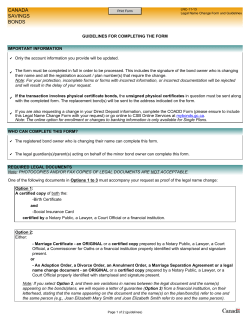
Brick Bonds Heritage Directory Note
Brick Bonds Heritage Directory Note www.theheritagedirectory.co.uk Copyright The Heritage Directory 2009 v1 The bonding of brickwork is the arrangement of brickwork by the pattern of headers (the shorter face of the brick) and stretchers (the longer face of the brick). The most common form of bond on historic buildings is Flemish Bond. Modern cavity walls are built in the monotonous Stretcher Bond. These appeared in the 1880’s, but by the 1890’s architects were already using snapped headers to continue the use of the more ornamental forms of brick bond. This technique is now used on new buildings in Conservation Areas to provide character by the use of Flemish Bond brickwork in particular . English Bond This is the oldest form of brick bonding, popular until the the late 17th century, consisting of alternate rows of headers and stretchers. Flemish Bond This is the most popular traditional form of brick bonding from the late 17th century onwards. This particular example Created by johnsome burnt or blue headers Copyright The Heritage Directory www.theheritagedirectory.co.uk 2009 English Garden Wall Bond Three rows of stretchers to one row of headers. This is very rarely found on buildings outside the north, where it is abundant and particularly prevalent on the east coast. It was used from the late 18th century onwards, and was also used occasionally for garden walls. Flemish Garden Wall Bond (Sussex Bond) Three stretchers to one header in each row. This has in fact rarely been historically used on garden walls. It is most common in West Sussex and Hampshire where it may be found on up to 10% of historic buildings. Header Bond Header bond was used for display glazed headers, curved walls or to give the impression of strength Copyright The Heritage Directory www.theheritagedirectory.co.uk 2009 Rat Trap Bond This rare bond was used in the early to mid 19th century as a cheap form of brickwork by laying the bricks on edge. Stretcher Bond Now used for most cavity brick walls but has a monotonous appearance. It can be avoided by the use of snapped headers to create other forms of brickwork. Quarter Staggered Bond Occasionally used in the 20th century to provide variety without the use of snapped headers. Basket Weave Sometimes used as a small decorative panel in the 1930’s, usually as infill to timber framing or an arch. Copyright The Heritage Directory www.theheritagedirectory.co.uk 2009 Herringbone Used sometimes as an infill to timber framed panels Monks Bond (Yorkshire Bond) Two stretchers to one header Sometimes used in the 19th and early 20th century Irregular Bond Early brickwork and rustic forms of brickwork can show little or no consistent pattern of brickwork. Very rarely referred to as Flying Bond Copyright The Heritage Directory www.theheritagedirectory.co.uk 2009 Diaper Brickwork Burnt Headers formed in a diamond pattern Copyright The Heritage Directory www.theheritagedirectory.co.uk 2009
© Copyright 2025





















